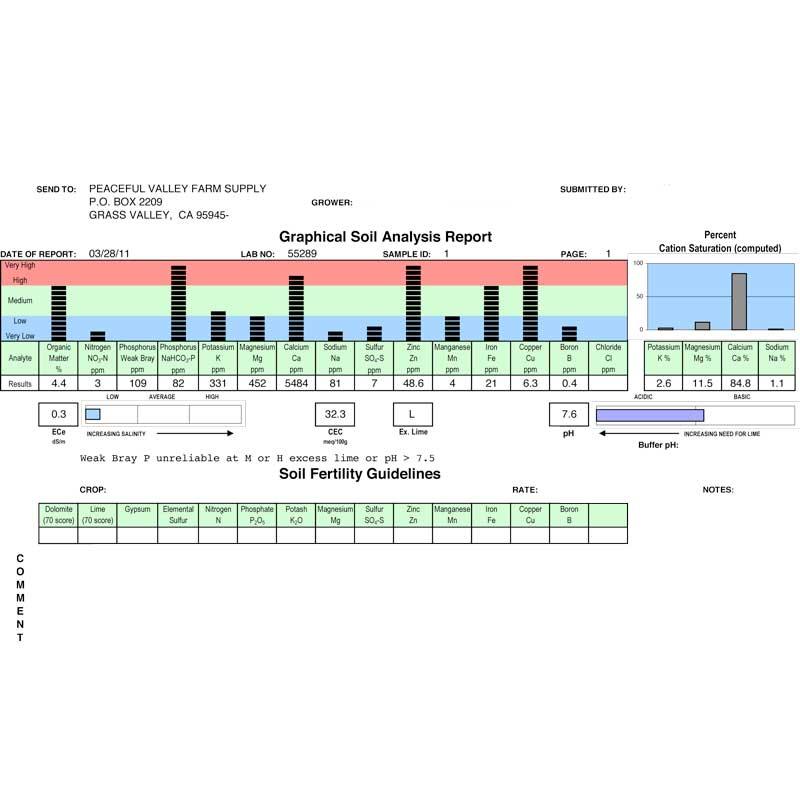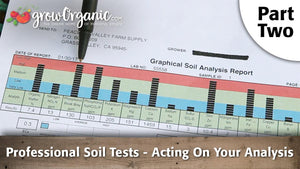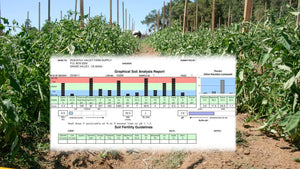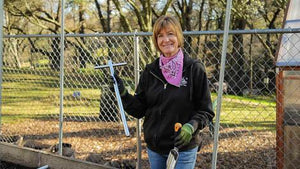Item Number: SVS200
Soil Test (S-103, Agricultural Soil)
Best Soil Test for a New Garden Location
It all starts with good soil. Whether you're gardening 10 sq ft or farming thousands of acres, smart growers know that soil tests pay for themselves in increased productivity and targeted fertilizing that is made possible by a specific diagnosis of the soil's strengths and weaknesses.
The Complete Soil Analysis Report includes lab readings for the following tests:
- Zinc, manganese, iron, copper and boron
- Organic matter
- Estimated nitrogen release & nitrate nitrogen
- Phosphorus (weak bray & sodium bicarbonate P)
- Extractable cations (potassium, magnesium, calcium, sodium), hydrogen, sulfate sulfur
- pH & cation exchange capacity and percent cation saturation and excess lime
Note: This test is for standard, agricultural soil test. DO NOT submit container media (potting mix or soil from confined, container growing) or organic amendments for the standard "soil" test. Standard, agricultural soil test methods were NOT designed for these types of materials. If your sample contains perlite, vermiculite, bark, rice hulls, amendments or any other potting mix, you will not receive accurate results. Please contact Customer Service for guidance on container media testing.
The important guidelines for taking soil samples:
1. Soils that differ in soil type, appearance, drainage, crop growth or past treatment should be sampled separately, provided the areas can be fertilized separately. Avoid areas or soil conditions that are different, such as lime piles, manure piles, fertilizer spills, gate areas, livestock congregation areas, poorly drained areas, tillage or fertilizer corners, barns, roads or fence rows.
2. Use a clean trowel or shovel to take the sample. Don’t use brass, soft steel or your hands to take a sample.
3. Scrape away surface debris or litter and dig a cone-shaped hole to a depth of approximately 6”. Then, cut a vertical cross section of the soil sample, from the surface all the way down to the sample depth.
4. Avoid varied depth of samples, combining unlike areas into one composite sample, or combining like soil areas with different past fertilizing or liming.
5. Take about a dozen cross sections for each soil test. If you are not testing in a raised bed, try to make the sample distances about 5 - 10 ft. apart. Mix them thoroughly in a clean plastic or paper container, don’t use rubber or galvanized steel as that could contaminate the soil. Fill sample bag to the line with this mixture. Send about 2 pounds of soil.
6. Preferably, the soil should not be sampled if it is much wetter than you would want it for tilling. If it is wet, allow it to air dry, away from the sun. Soil should never be dried with heat. Don’t put wet soil in sample bag––it will mold.
7. Don’t touch soil with hands or contaminated equipment. Don’t use galvanized, soft steel or brass equipment for sampling. Don’t put soil in metal bucket because the zinc affects the soil test.
8. Return 1000 grams or 2lbs of soil for testing. Typically, a one gallon zip lock bag that is ½ - ¾ full will suffice.
- Write the GROW number (receipt number) & name on the ziplock bag
- send to:
Peaceful Valley Farm Supply
Attn: Soil Analysis
125 Clydesdale Ct
Grass Valley, CA 95945
9. For samples not originating within the lower 48 states please call for special shipping instructions as required by the USDA.
Check Your Zone Compatibility:
Compatible with your zone.
Growing Zone for

Our Guarantee To You
Since 1976, we've served our customers at every stage of growing. Please contact us at any time. We are happy to support and assist you.
Shipping Information
Shipping Information
Shipping Weight: 0.01 lb
Dimensions: 1.0"L x 1.0"W x 1.0"H
Features
Features
- Tests for Additional Minerals
- Tests for NPK
- Tests for pH
Characteristics
Characteristics
Use Instructions
Use Instructions
Useful Information
Useful Information
Guarantee
Guarantee
Share
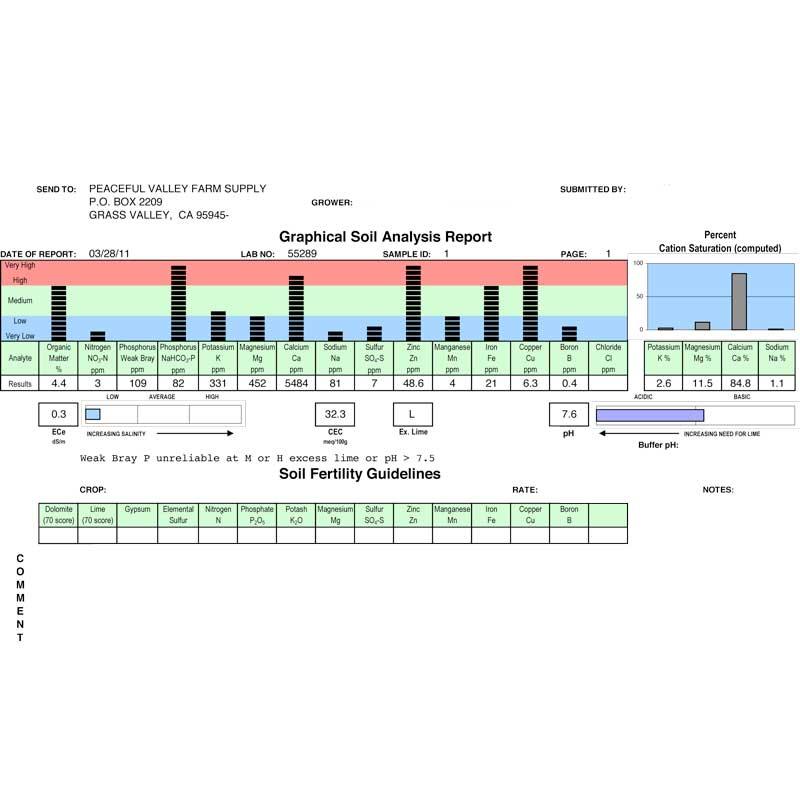

This test was expensive and gives good insight into your soil. HOWEVER, I ordered my test and didn't receive a shipping notice. So, 2 weeks later I decided to reach out to their support team. They apologized and promptly shipped it. I was able to get the results not long after I returned the sample. I was told to contact an email address to learn how to read the results. I did, 2 weeks & 2 emails later I haven't heard back. If you don't know how to read this analysis, they do not give you a way to learn how to implement the results into your garden. Despite what their videos say, there is no "booklet" that comes with your results. SUCH A WASTE!!!
This test though expensive gives great information about all aspects of your soil so you can make the best of soil amendments.
Love all the detailed explanations!
I have an ever-growing vegetable garden for my client. Some raised beds, some not. 2000 sq. ft. this year. I have sent out soil samples to a highly regarded agricultural university in my area with great results. I sent one bed/area to test side-by-side by Peaceful Valley. Your soil analysis is on par, accurate, but easier to read for the non-professional.
I highly recommend their analysis with the booklet to help you understand what’s what. And, truthfully I am a real person. Not needing to give “stars”. I only want to help my fellow gardeners. Katonah, NY. Private gardener.
Fifty bucks for one sample is too much. Also, their method of sampling may not be valid in today's subdivisions. Today, subdivisions are built with numerous scrapers hauling dirt from different locations. It's entirely possible that you can have several different kinds of soil on your property separated by less than a foot. A scraper can come rumbling through with a load of one kind of soil and another right along side with a load of another kind of soil from a different location. This is not only possible, in some subdivisions, it's highly likely.
Videos
-
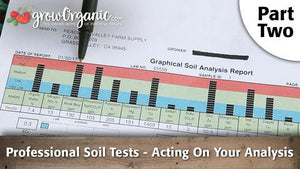 Thu, Feb 06, 2025
Thu, Feb 06, 2025Professional Soil Tests - (Part 2) Acting On Your Analysis
-
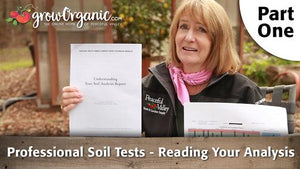 Tue, May 27, 2025
Tue, May 27, 2025Professional Soil Tests - (Part 1) Reading Your Analysis
-
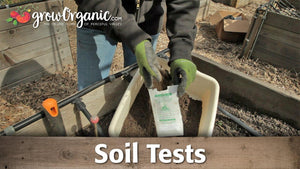 Tue, May 27, 2025
Tue, May 27, 2025How to Take a Good Soil Sample for Testing
-
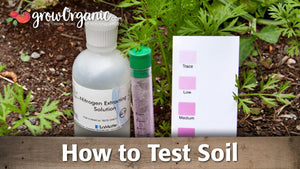 Wed, Oct 08, 2025
Wed, Oct 08, 2025How to Test Soil
-
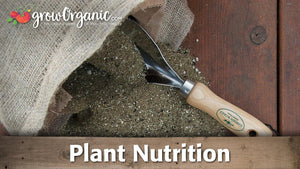 Mon, Mar 27, 2023
Mon, Mar 27, 2023Plant Nutrition
-
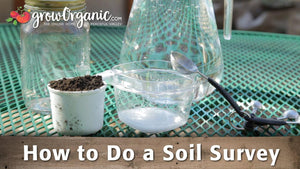 Thu, Jan 23, 2025
Thu, Jan 23, 2025How to Do a Soil Survey

